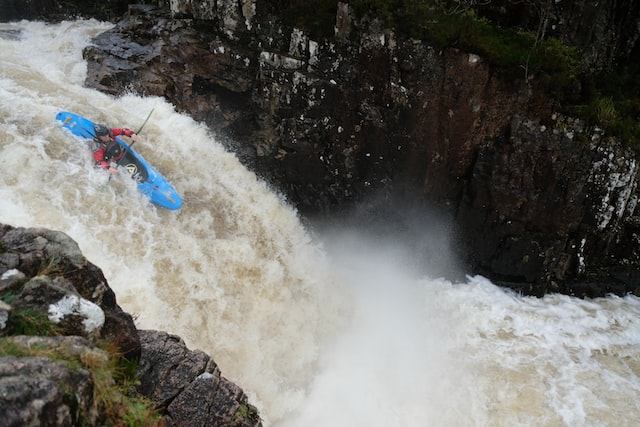Determining Whether or Not to Paddle a River
Scouting a whitewater river actually begins at home through research. River descriptions and whitewater scouting reports are available for virtually every whitewater river that can be paddled online. There also are guide books that contain the river descriptions by state, region, or local area. These come in handy when on the road and where phone coverage and internet signals are scarce. Of course,
there is probably no better research than getting a wide variety of oral reports or word-of-mouth on a particular paddling spot. Taken together, each of these factors should be considered when determining if and when a river should be paddled.
Whitewater Classification
Every paddler should know his or her paddling ability at all times. Beginners can handle class ii and class iii water. Intermediates can handle some class iv rivers. It’s up to each individual to determine what their abilities are with regard to the whitewater classification system. So, when reading a scouting report one of the main determining factors of to paddle or not should be river classification. However, river classification is always nuanced and can change for each river or rapid depending on these additional factors.
Water Level and River Flow
There are two measurements used by paddlers to determine if a river has enough or too much water in it to kayak, canoe, raft, or float. The first is called the river level. This refers to how high a river comes up to a specific gauge which is usually a bunch of numbers and hash marks on a pole, bridge, or rock in the water. River gauges are specific to each river. Many are maintained by the Army Corps of Engineers while others are makeshift markings placed there by local paddlers. The other measurement that paddlers consider is the water flow in volume or cubic feet per second (CFS) that the river is flowing at. Both of these measures are unique for each river and many are published by American Whitewater .
Time of Year
The time of year affects whether or not water will be flowing and also the air and water temperatures. Some rivers only run during the spring runoff or snowmelt. So you won’t be able to just show up and paddle during the dry months. Some rivers are remote and there may be no path down to the water in the snow. When researching a river, take note of the times of the year when it runs.
Whitewater River Release Schedule
There are rivers that run rather regularly but they might be subject to release schedules. Dam-controlled rivers only release at certain times of the day, week, month, and year. The release schedule will also usually contain the amount of water in CFS they will be releasing from the dam.
Whitewater River Accessibility
The accessibility of the river by road should be mentioned in a scouting report. You will want to know how easy it is to get to the put-in and take-out. This will also tell you the best way to run shuttle. Lastly, you’ll want to know once you’re in the river how close the road or civilization is if you get into trouble.
Whitewater Obstacles to Avoid or Things You Must Do
Whenever you research a river prior to paddling it you will especially want to know if there are any river features you absolutely must avoid. There might be a particular hole that has taken lives due to a pinning rock being down in it. There could be a dam that just must be portaged. There might be a river feature that signals the point of no return and you must get out of the river at that point.
Portage and Scout-Ability
This is a big one for beginners or anyone setting out to paddle a river that is above their head. You will want to know if you can scout all hazards and advanced river features and if you can portage or walk around all hazards. Additionally, the answer might be yes, but you’ll also want to know how easy it is to do so.

